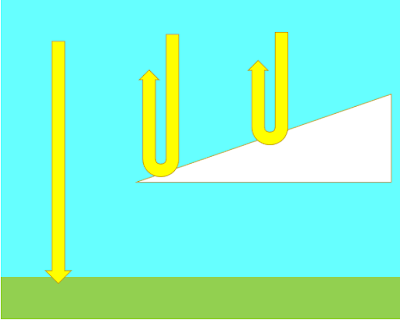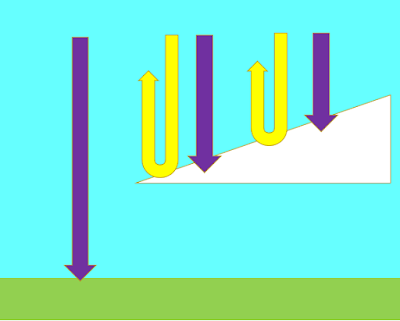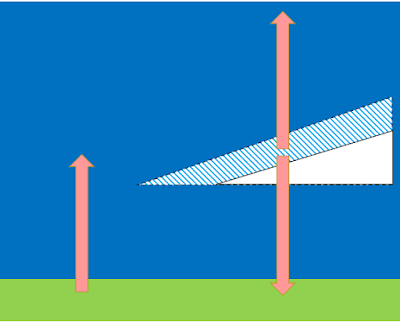That's a question to which I have found no obvious answer, but I assume that if there is a bit of extra high intensity UV-B hitting the atmosphere, it will evaporate some of the clouds, i.e. turn water droplets back into water vapour. The wavelength of UV-B is orders of magnitude less than visible or infra red, so the chances of it hitting water molecules in exactly the right place to evaporate them is commensurately higher.
This can lead to a disproportionate effect on surface and atmospheric temperatures. This theory might be totally wrong of course but it seems plausible to me. The effect must be warming, however slight. I've not put numbers on the effect because you have to make far too many assumptions so that would 'prove' nothing. This is a wait and see operation. If I live long enough to see the 'ozone hole' repair itself (perhaps by the middle of this century?) and temperatures fall again even though CO2 levels have increased (and they will), then that would support the theory but not really 'prove' it either way:
1. Starting position pre-ozone depletion
Some sunlight hits the surface, most of it hits clouds and is partially reflected:
 2. There is now more UV-B (imaginatively coloured violet, even though it is invisible)
2. There is now more UV-B (imaginatively coloured violet, even though it is invisible)
Some hits the surface; most of it hits clouds:
 3. Cloud cover is reduced
3. Cloud cover is reduced
Some of the energy in UV-B evaporates water droplets and so is converted to latent heat of evaporation (no measurable temperature increase). That thins the clouds slightly and reduces the amount of cloud cover. This allows more sunlight at all other wavelengths through to the surface.
So it's not so much the bit of extra UV-B which warms the surface; it is all the other sunlight that isn't reflected and that now gets through. An average reduction in cloud cover of 2% reduces albedo and increases the amount of sunlight getting through by about 1%, sufficient to cause about 1 degree of surface warming:
 4. At night, the water vapour condenses into clouds again
4. At night, the water vapour condenses into clouds again
The energy converted to latent heat of evaporation during the day turns back into extra thermal energy when the water vapour condenses again (or the rate of cooling is lower than it otherwise would be). This warms the atmosphere slightly. The surface is also slightly warmer. The pink arrows denote the extra infra red and warmth generally:

